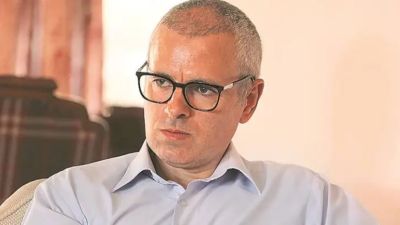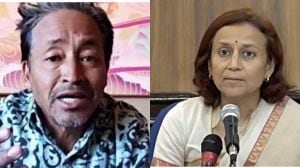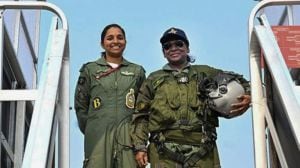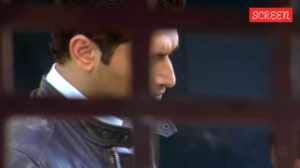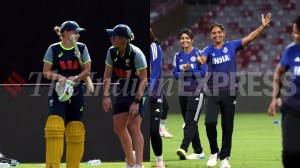This is the pipe, pump at a CPM leader’s house
Eloquent verbs, not usually seen in a government document, figure in the official note on how the Rajiv Gandhi National Drinking Water Mission...

Eloquent verbs, not usually seen in a government document, figure in the official note on how the Rajiv Gandhi National Drinking Water Mission, is meant for those rural Indians who “trudge, struggle and sweat for a drop of drinking water.” After Rs 76 lakh spent on the scheme in this village in south West Bengal, 7000 villagers still trudge, struggle and sweat for water to drink.
As The Indian Express first reported, a nationwide performance audit of the scheme by the Comptroller & Auditor General found glaring examples of waste, corruption and fraud in its implementation and called for “immediate action” given that Rs 7000 crore has been earmarked nationwide for the programme this year. The CAG looked into the implementation of projects from 2002-03 to 2006-07 — two years of NDA, three of UPA — in 153 districts in 26 states.
An investigation by The Indian Express in Madpur, 18 km from Kharagpur — in West Midnapore district which came in for CAG criticism — found that the scheme collapsed in less than two years of its “completion.” The only ones who have benefited are five CPM leaders who have created permanent jobs for themselves. They continue to get their salaries as Operator (four), Maintenance Contractor (one) — when there is nothing to operate or maintain.
Each Operator was paid Rs 65 per day when the scheme began; after it collapsed, they were redesignated as guards and are being paid Rs 1000 a month now.
Jiten Pradhan, an operator of Pump No 1 and also the head of the CPM-run Paporara gram panchayat — which falls in Madpur — says that fixtures and pipes started going missing and he filed a complaint with the Kharagpur Local Police Station but nothing happened. The other Operator is Asit Maity, secretary of the CPM’s local committee.
Official records show that Madpur Water Supply Project under the Accelerated Rural Water Supply Programme, funded by the Union Government, was sanctioned in 2000-01 and “fully commissioned” in 2003-04.
The log book of the scheme’s Pump No. I shows it began operating on November 10, 2003, and stopped functioning on October 25, 2005 when it began spewing mud and slush.
But interviews with several villagers and even local officials show that the scheme supplied “cloudy water” for barely a fortnight in some villages and a couple of months in some others before stopping altogether. Soon, one pump went missing, a 20-foot section of the eight-inch pipe was stolen and 15 km of asbestos pipes in the network fractured in several places.
A second pump in Pump House No. 2 is under lock and key. One window is broken, the door hinges are rusted. A group of villagers mistook this reporter for a Public Health Engineering official and asked: “Are you going to get the pump functioning again? Summer is approaching and we don’t get any water either in the ponds or in handpumps.”
Barely a kilometre away, at Pump No. 1, the pump is missing, so are the pipes and fixtures, the windows are broken. The Indian Express tracked the missing pump to the house of Subhas Patra, a member of the CPM’s Paporara local committee. When asked to explain, he says: “Someone else would have taken it away, so I brought it into my house.”
Another resident Tumpa Singh readily admits that she has some of the missing cast-iron pipes half buried in her courtyard. “The others sold pieces of the pipes at Rs 15-18 a kg. I haven’t done so,” she says. “Even the police know that I have kept some pipes here.”
Tumpa Singh is the wife of Milon Singh, one of the two Operators for Pump No. 2 and a member of the CPM local committee as well as of the gram panchayat. Manik Singh, the other Operator, is a member of the CPM’s Bhandaria branch.
The contractor responsible for maintaining the system is Ritesh Raul of Ritesh Enterprise. Ritesh is the son of Santosh Raul, a mechanic with the scheme’s implementing authority, the Kharagpur PHE. Ritesh Raul is defensive about the CPM links of the operators. “Their names were recommended by the Zilla Parishad and I can do nothing,” he says. The Zilla Parishad is controlled by the CPM.
In Kolkata, Joint Secretary of the Public Health Engineering department is puzzled. “We haven’t got any such reports of theft or non-functioning systems from any place,” says S K Bhattacharya, IAS.
For water to drink, therefore, the 7000 villagers have to line up at 80 of the 100 handpumps that work. “At least 20 are out of order at any point,” admits Pradhan. As summer approaches, many of these handpumps run dry. “We have only the deep wells then, the four months are going to be terrible.”
Madpur is just one of the problem areas. The CAG’s draft audit found problems in several districts. Some of the glaring examples, as per the audit report:
•Malda: Project worth Rs 3.79 crore, expenditure of Rs 3.68 crore as of August 2007 but no work was done on increasing the yield of tubewells. Result: demand for drinking water unmet.
•North 24 Parganas: Two tubewells sunk for Rs 9 lakh declared defunct, yielded of “oily and gas substances” along with water. Three tube wells sunk in 2002 were supplying arsenic-contaminated water to 14000 villagers.
•South 24 Parganas: One of the two tubewells sunk at a cost of Rs 98 lakh declared defunct.
•Bankura: One scheme sanctioned in 2001-02 at a cost of Rs 1.72 crore to cover seven mouzas could not be taken up as of August 2007 due to “non-finalization” of source — meaning no one still knows where the water will come from.






- 01
- 02
- 03
- 04
- 05


